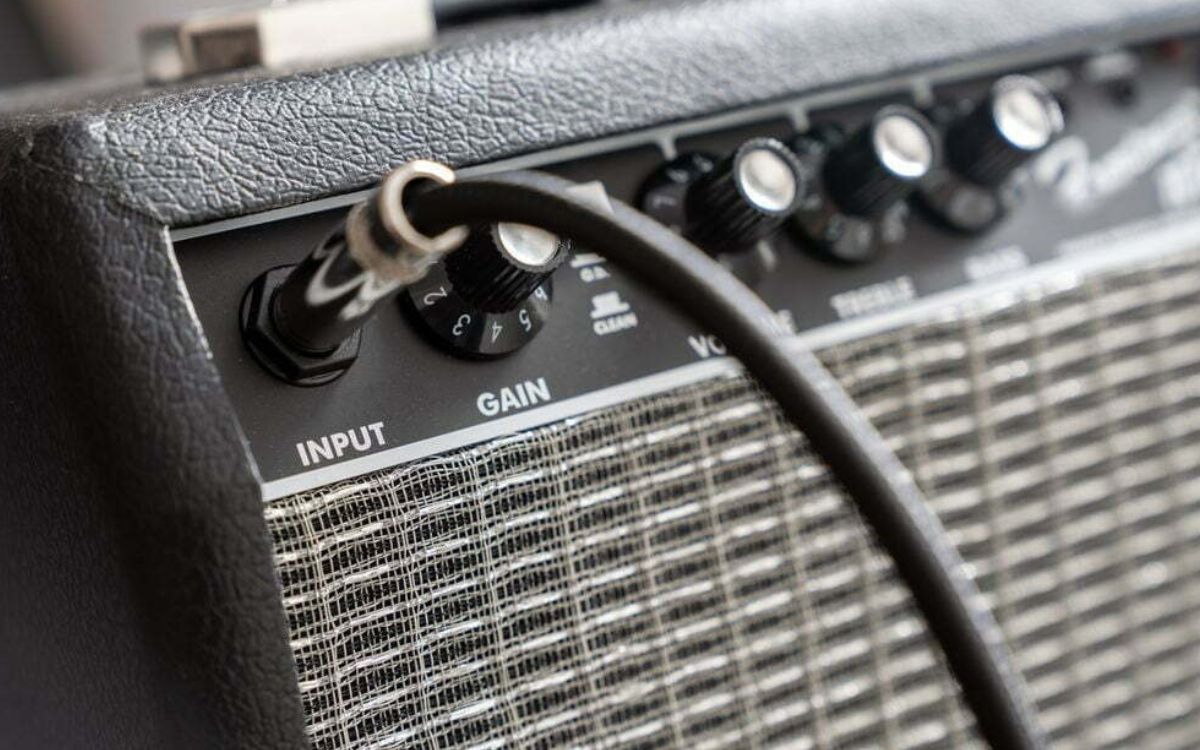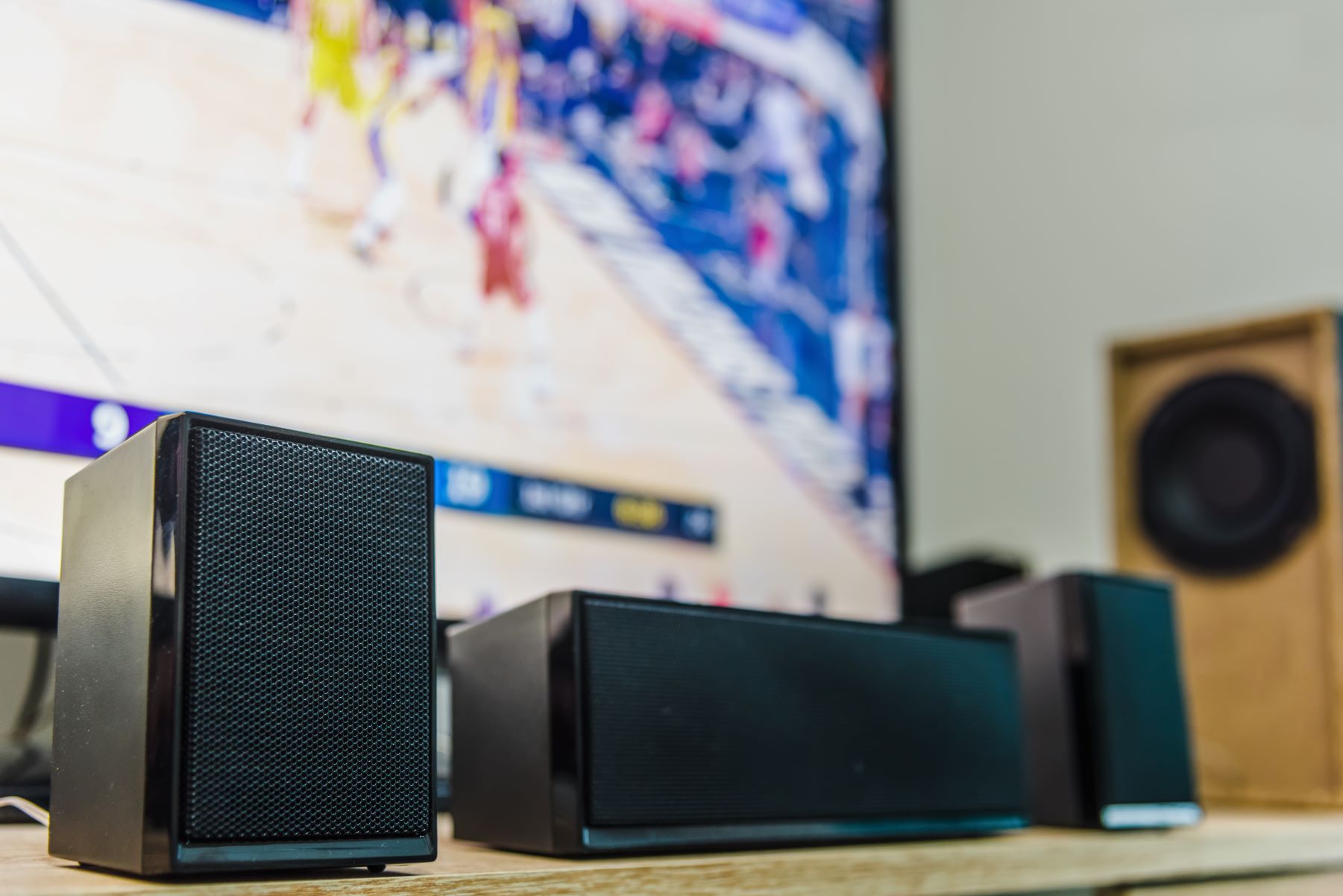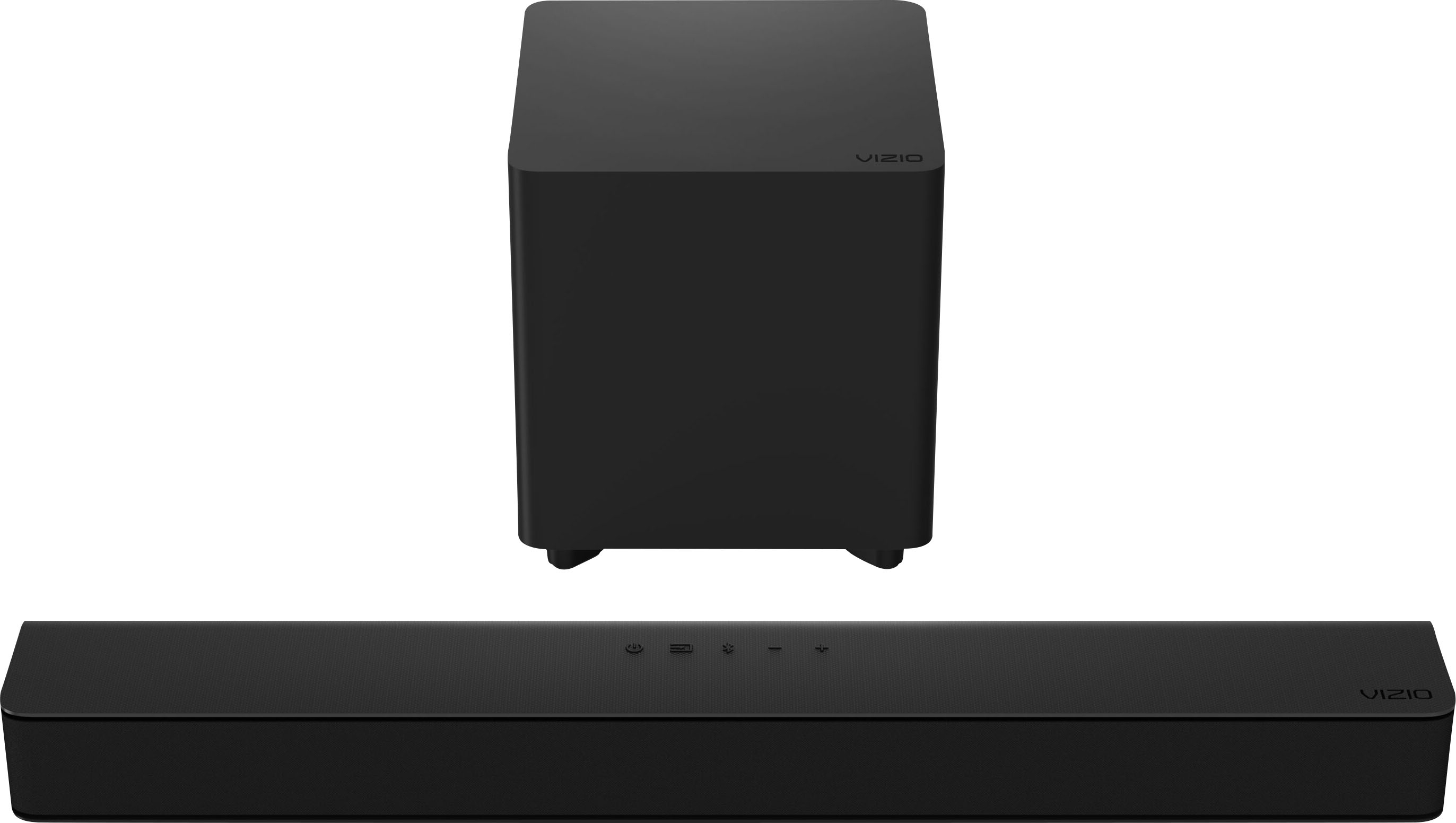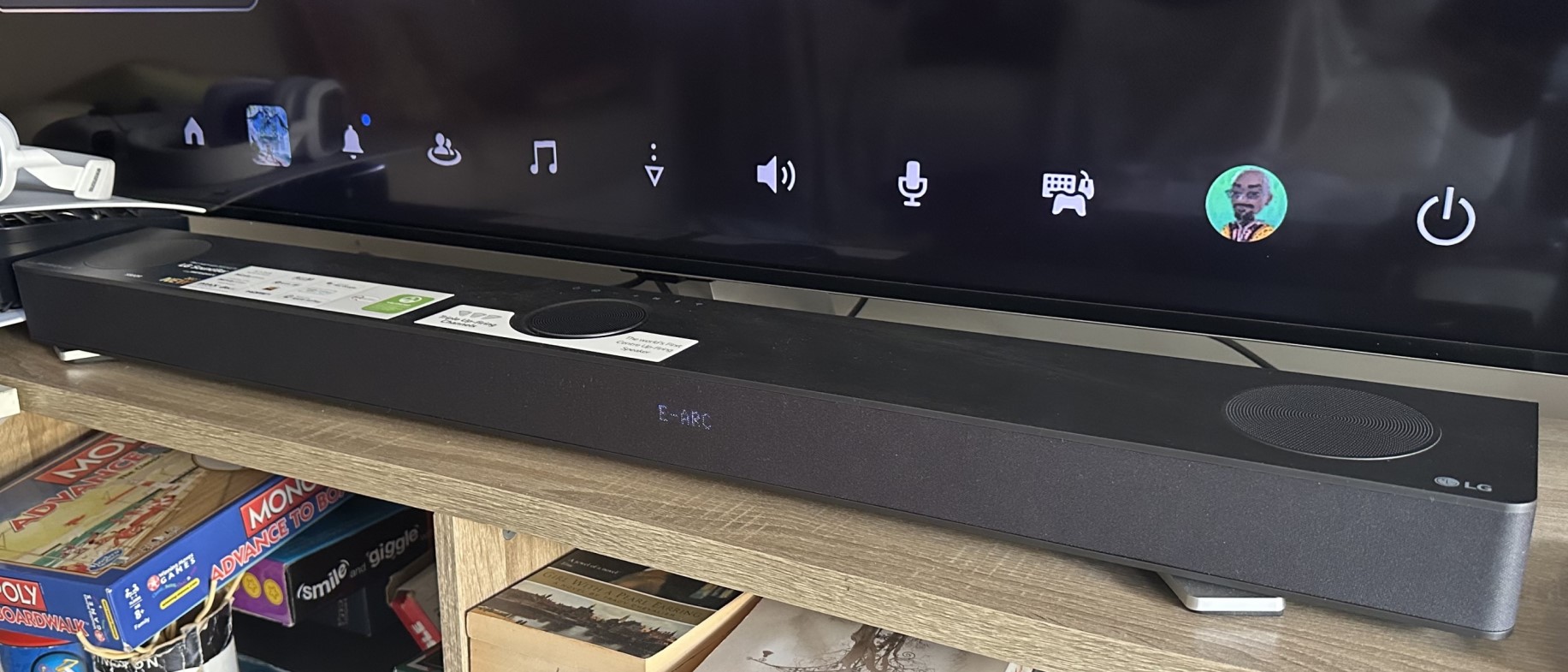Home>Production & Technology>Sound Bar>What Does A Sound Bar Subwoofer Do


Sound Bar
What Does A Sound Bar Subwoofer Do
Modified: January 22, 2024
Discover the role of a sound bar subwoofer in enhancing your audio experience. Learn how a sound bar with a subwoofer can deliver deep, impactful bass for your favorite movies and music.
(Many of the links in this article redirect to a specific reviewed product. Your purchase of these products through affiliate links helps to generate commission for AudioLover.com, at no extra cost. Learn more)
Table of Contents
Introduction
Welcome to the world of sound bars and subwoofers! If you’re looking to enhance your audio experience at home, a sound bar with a subwoofer is a perfect combination to achieve that immersive sound you’ve been craving. But what exactly does a sound bar subwoofer do, and how does it contribute to your audio setup? In this article, we will explore the role of a sound bar subwoofer and the benefits it brings to your listening pleasure.
A sound bar subwoofer is a specialized speaker designed to deliver low-frequency sounds, commonly known as bass, in your audio system. While a sound bar itself can produce a decent range of sound, it usually lacks the depth and impact that a subwoofer provides. The subwoofer is dedicated to reproducing the low-end frequencies, giving your audio the necessary weight and presence that can make a significant difference in your overall audio experience.
With a subwoofer, you can expect your sound bar system to deliver deep, rumbling bass that adds depth to music, movies, and games. The subwoofer works in tandem with the sound bar, complementing its performance and completing the audio spectrum. Whether you’re listening to your favorite music, watching your favorite action movie, or immersing yourself in the virtual world of gaming, a sound bar subwoofer can bring a whole new level of excitement and realism to your audio setup.
But the benefits of a sound bar subwoofer extend beyond just producing thunderous bass. It also plays a crucial role in improving the overall sound quality of your audio system. By separating the low-frequency sounds and allocating them to the subwoofer, the sound bar can focus on reproducing mid-range and high-frequency sounds more accurately and with greater clarity. This separation of frequencies reduces distortion and allows each speaker to operate more efficiently, resulting in a more balanced and immersive audio experience.
Now that we understand the importance of a sound bar subwoofer and its impact on your audio setup, let’s delve into the specific functions it performs and how it enhances your listening experience. By harnessing the power of a sound bar and subwoofer combination, you can truly transform your home entertainment system into a cinematic powerhouse or a concert-worthy audio setup.
What is a Sound Bar Subwoofer?
A sound bar subwoofer is a specialized speaker that is part of a sound bar system. It is dedicated to reproducing low-frequency sounds, commonly referred to as bass frequencies. While a sound bar is designed to provide a wide range of audio, including mid-range and high frequencies, the subwoofer focuses on delivering deep, impactful bass.
The subwoofer is typically a larger and bulkier speaker compared to the main sound bar unit. It houses a powerful driver and amplification system specifically designed to handle low-frequency sounds. This allows the subwoofer to produce the low-end rumble and thump that adds depth and realism to your audio experience.
Sound bar subwoofers can come in various shapes and sizes. Some subwoofers are wireless and can be placed anywhere in the room, while others may be wired to the sound bar unit. The connection between the sound bar and subwoofer can be established through Bluetooth, Wi-Fi, or a proprietary wireless technology. This gives you the flexibility to position the subwoofer in the ideal location for optimal bass performance.
It’s important to note that not all sound bars come with a dedicated subwoofer. Some sound bar models may feature built-in subwoofers, utilizing advanced audio processing techniques to generate bass frequencies without the need for a separate subwoofer unit. While built-in subwoofers may provide satisfactory bass performance, they often lack the depth and impact of a dedicated subwoofer.
A sound bar subwoofer is an essential component for those seeking a truly immersive audio experience. It adds a layer of richness and depth to your soundstage, allowing you to feel the thud of explosions in movies or the booming basslines in music. Whether you’re a movie enthusiast, music lover, or avid gamer, a sound bar subwoofer can make a significant difference in the overall audio quality and enjoyment of your multimedia content.
Function of a Sound Bar Subwoofer
The function of a sound bar subwoofer goes beyond simply delivering deep bass. It plays a crucial role in enhancing the overall audio performance and creating a more immersive listening experience. Let’s explore some of the key functions of a sound bar subwoofer:
- Enhancing Bass Performance: The primary function of a subwoofer is to reproduce low-frequency sounds, adding depth and impact to your audio. By focusing on these bass frequencies, the subwoofer allows the sound bar to handle mid-range and high frequencies more efficiently, resulting in clearer and more accurate sound reproduction.
- Improving Sound Quality: By offloading the low-frequency sounds to the subwoofer, the sound bar can dedicate its resources to producing higher frequencies with greater clarity and detail. This separation of frequencies reduces distortion and enhances the overall sound quality, making your audio experience more enjoyable.
- Expanding Soundstage: The presence of a dedicated subwoofer in your sound bar system can help create a more immersive soundstage. The low-frequency sounds produced by the subwoofer add a sense of depth and dimension to the audio, making you feel like you’re in the midst of the action. Whether you’re watching a movie, gaming, or listening to music, the subwoofer contributes to a more enveloping and engaging audio experience.
- Providing Balanced Audio: A well-designed sound bar subwoofer ensures that the bass frequencies are blended seamlessly with the mid-range and high frequencies from the sound bar. This helps maintain a balanced audio output, preventing overwhelming bass that can drown out other elements of the sound. The result is a harmonious and immersive sound experience across all frequencies.
- Adding Depth to Movie Soundtracks: Movies are known for their dynamic soundtracks, with explosions, car chases, and intense action sequences that benefit greatly from a powerful subwoofer. A sound bar subwoofer can reproduce the deep rumble and impact of these low-frequency effects, bringing movies to life and making you feel like you’re right in the middle of the action.
Overall, the function of a sound bar subwoofer is to complement the performance of the sound bar, delivering deep bass and enhancing the overall audio quality. Whether you’re enjoying movies, music, or games, a sound bar subwoofer is an essential component that adds richness, depth, and realism to your audio experience.
Enhancing Bass Performance
One of the primary functions of a sound bar subwoofer is to enhance the bass performance of your audio system. The subwoofer is specifically designed to handle low-frequency sounds, creating a foundation of deep, rumbling bass that adds impact and depth to your audio experience. Let’s explore how a sound bar subwoofer achieves this:
1. Reproducing Low-Frequency Sounds: The subwoofer is equipped with a dedicated driver and amplifier that are optimized for handling low-frequency sounds. It can reproduce bass frequencies that are not adequately produced by the main sound bar unit alone. This means you can enjoy a more robust and powerful bass response, especially when compared to relying solely on the sound bar’s built-in speakers.
2. Enhancing Immersion in Movies and Games: Whether you’re watching a high-octane action movie or playing the latest video game, the subwoofer helps recreate the intensity and impact of low-frequency effects. Explosions, thunderstorms, and powerful engine roars become more realistic and immersive with the added bass presence. The deep rumble and vibrations produced by the subwoofer make these effects more palpable and heighten the overall excitement and engagement.
3. Enriching Music Listening: When it comes to music, a sound bar subwoofer can bring your favorite tracks to life by delivering the lowest frequencies that add richness and depth to the sound. From the punchy kick drums in a rock song to the resonating basslines in electronic music, the subwoofer ensures that you can feel and appreciate the low-end elements of the music, enhancing your listening experience and capturing the intended artistic expression.
4. Balancing Audio Output: By offloading the reproduction of low-frequency sounds to the subwoofer, the main sound bar unit can focus on delivering mid-range and high-frequency sounds more effectively. This separation of frequencies allows for a more balanced audio output. The sound bar can reproduce vocals, instruments, and ambient details with greater clarity, while the subwoofer handles the deep bass, ensuring that each element of the audio is heard distinctly and the overall sound is well-rounded.
5. Customizing Bass Settings: Many sound bar subwoofers come with adjustable settings that allow you to customize the level of bass according to your preference or the content you’re consuming. Whether you prefer a booming, powerful bass or a more subtle, nuanced bass, you have the flexibility to tweak the settings to achieve the desired effect. This control ensures that you can fine-tune the bass performance to suit your listening environment and personal preferences.
With these capabilities, a sound bar subwoofer greatly enhances the bass performance of your audio system, immersing you in a world of deep, resonant sound. From movies and games to music and beyond, the subwoofer brings a new dimension of impact and realism to your audio content, elevating the overall quality of your listening experience.
Improving Sound Quality
A sound bar subwoofer not only enhances bass performance but also plays a significant role in improving the overall sound quality of your audio system. By offloading the low-frequency sounds to the subwoofer, several key benefits are realized, resulting in a more balanced and immersive audio experience. Let’s explore how a sound bar subwoofer improves sound quality:
1. Clearer and More Accurate Mid-Range and High Frequencies: With the subwoofer handling the low-frequency sounds, the main sound bar unit can focus on reproducing mid-range and high frequencies more effectively. This results in clearer and more accurate sound reproduction, allowing vocals, instruments, and other details in the mid and high range to shine. The separation of frequencies reduces distortion, ensuring that each element of the audio is heard with greater clarity and detail.
2. Reduction in Speaker Strain and Distortion: When a sound bar tries to produce deep bass frequencies on its own, it can strain the speakers, leading to distortion and compromised sound quality. By incorporating a dedicated subwoofer, the workload is properly distributed. The subwoofer handles the demanding low frequencies, relieving the sound bar speakers from excessive strain. This results in cleaner, more accurate sound reproduction across all frequencies and minimizes the risk of speaker damage.
3. Enhanced Audio Balance: The presence of a subwoofer allows for a better balance between the low, mid, and high frequencies in your audio system. The subwoofer delivers deep bass that adds weight and presence, while the sound bar concentrates on the mid-range and high-frequency sounds. This balance ensures that no frequency range overpowers the others, providing a more harmonious and immersive audio experience across the entire sound spectrum.
4. Greater Dynamic Range: With a sound bar subwoofer, you can experience a wider dynamic range in your audio content. The subwoofer’s ability to reproduce deep bass allows for greater contrast between the quietest and loudest parts of a soundtrack. This dynamic range adds depth and realism to your listening experience, making quiet moments more delicate and intense moments more impactful.
5. Immersive Surround Sound: Some sound bar subwoofers are part of a larger surround sound system, capable of creating a more immersive audio environment. By working in conjunction with satellite speakers or a sound bar that features surround sound technology, the subwoofer helps recreate a realistic and enveloping surround sound experience, making you feel like you’re in the middle of the action.
In summary, a sound bar subwoofer improves sound quality by allowing the main sound bar unit to focus on mid-range and high frequencies, reducing strain on the speakers, creating a better audio balance, and delivering a wider dynamic range. With these enhancements, you can enjoy a more refined and immersive sound experience across various content, elevating your home entertainment to a new level.
Expanding Soundstage
A sound bar subwoofer doesn’t just enhance bass performance and improve sound quality—it also plays a crucial role in expanding the soundstage of your audio system. The soundstage refers to the perceived spatial placement and width of sound sources in your audio setup. Let’s explore how a sound bar subwoofer helps create a more expansive and immersive soundstage:
1. Adding Depth and Dimension: By reproducing low-frequency sounds, the subwoofer provides a foundation of deep bass that adds depth and dimension to the soundstage. This allows audio content to feel more three-dimensional, creating a sense of space and immersion. Whether it’s the thump of footsteps in a video game or the reverberating bass notes in a concert recording, the subwoofer adds a layer of realism and presence that takes your audio experience to the next level.
2. Creating a Seamless Blend: Sound bar subwoofers are designed to seamlessly integrate with the main sound bar unit. The subwoofer’s ability to handle low-frequency sounds allows the sound bar to focus on reproducing the mid and high frequencies more accurately. This synergy between the sound bar and subwoofer ensures a cohesive and balanced audio output, where each element of the soundstage occupies its rightful place, resulting in a more natural and immersive listening experience.
3. Filling the Room with Sound: The deep bass produced by the subwoofer has the ability to fill the room, creating a sense of spaciousness and envelopment. As the low-frequency sounds resonate throughout the space, they interact with the room’s acoustics and bounce off surfaces, further enhancing the perception of a wider soundstage. This immersive audio environment makes you feel as if you’re surrounded by the sound, whether you’re watching a movie or enjoying a virtual concert.
4. Enveloping Surround Sound Experience: Some sound bar subwoofers are part of a complete surround sound system, working in conjunction with satellite speakers to deliver a true surround sound experience. By combining the subwoofer’s deep bass with directional audio from the satellite speakers, you can enjoy audio that seems to come from all around you. This expands the soundstage and creates an immersive audio environment, particularly beneficial for movies and gaming.
5. Enhancing Spatial Accuracy: The subwoofer’s contribution to the soundstage also aids in the accurate placement of sound sources. By providing a solid foundation of bass, the subwoofer allows the sound bar to better localize and position sound effects, instruments, and vocals within the audio landscape. This spatial accuracy adds realism and authenticity to the audio, making it feel as if the sounds are coming from their intended direction and distance.
In summary, a sound bar subwoofer expands the soundstage by adding depth, dimension, and realism to your audio experience. It creates a cohesive and balanced audio output, fills the room with immersive sound, and works in tandem with other speakers to provide a surround sound experience. With a wider soundstage, you’ll feel more immersed in your favorite movies, music, and games, as the audio becomes more enveloping and lifelike.
Connecting a Sound Bar Subwoofer
Connecting a sound bar subwoofer to your audio system is typically a straightforward process. While the specific steps may vary depending on the make and model of your sound bar and subwoofer, the general principles remain the same. Let’s explore how to connect a sound bar subwoofer:
1. Check for Compatibility: Before purchasing a sound bar and subwoofer, ensure that they are compatible with each other. This is typically mentioned in the product specifications or user manual. Some sound bars come with a dedicated subwoofer, while others may require a separate subwoofer to be purchased and connected.
2. Identify the Subwoofer Output/Input: On the back or side panel of the sound bar unit, locate the subwoofer output or dedicated subwoofer input. This is usually labeled as “Sub Out” or “Subwoofer Out.” On the subwoofer itself, locate the corresponding input, marked as “Sub In” or “Subwoofer In.”
3. Connect the Subwoofer to the Sound Bar: Using an appropriate cable, such as an RCA cable or a proprietary cable provided with the sound bar and subwoofer, connect one end to the subwoofer output on the sound bar and the other end to the subwoofer input. Ensure the connections are secure and tight.
4. Power on the Subwoofer: Plug the subwoofer into a power outlet and switch it on. Some subwoofers may have a power switch or button that needs to be pressed. Once powered on, the subwoofer should establish a connection with the sound bar.
5. Pairing (for wireless subwoofers): If your sound bar system uses a wireless subwoofer, it may require a pairing process to establish a connection. Consult the user manual of your specific sound bar and subwoofer to understand the pairing procedure. This typically involves pressing a pairing button or following specific instructions provided by the manufacturer.
6. Test the Connection: Play audio through your sound bar system to ensure that the subwoofer is working correctly. You should notice deeper bass and improved sound quality with the subwoofer properly connected and functioning.
7. Adjust Subwoofer Settings: Most sound bars allow you to adjust the subwoofer settings to fine-tune the bass levels according to your preference. These settings may be accessible through the sound bar’s remote control or a dedicated control panel. Experiment with the settings to achieve the desired bass response that complements your listening environment and personal preferences.
It’s important to consult the user manual that came with your sound bar and subwoofer, as the specific connection process may vary. Additionally, some sound bar systems may offer more advanced connectivity options, such as Bluetooth or Wi-Fi, allowing for a wireless connection between the sound bar and subwoofer. Ensure you follow the instructions provided by the manufacturer to make the appropriate wireless connection.
With the sound bar subwoofer properly connected, you can now enjoy the enhanced bass performance and immersive sound that it brings to your audio system. Whether you’re watching movies, listening to music, or playing games, the subwoofer adds depth and impact to your audio, elevating the overall listening experience.
Placement of a Sound Bar Subwoofer
Proper placement of a sound bar subwoofer is crucial for achieving optimal bass performance and ensuring the best audio experience. The following guidelines can help you determine the ideal placement for your subwoofer:
1. Positioning Options: Subwoofers are typically more flexible in terms of placement compared to other speakers. They can be positioned on the floor, in a cabinet, or on a dedicated subwoofer stand. The goal is to find a location that provides a balanced and immersive bass response.
2. Experiment with Placement: Begin by placing the subwoofer near the front wall or in the front corner of the room. Play some audio with deep bass and listen to how it sounds. Move the subwoofer around the room to different positions and repeat the test until you find the spot with the best bass response.
3. Avoid Placing Against Walls: While placing the subwoofer near a wall can enhance bass response, avoid positioning it directly against a wall. The sound waves from the subwoofer will interact with the wall, potentially causing excessive bass buildup and muddiness. Leave a small gap between the subwoofer and the wall to allow for proper dispersion of sound.
4. Consider Room Acoustics: The acoustics of your room can significantly affect the performance of your subwoofer. Hard surfaces, such as hardwood floors or bare walls, can cause sound reflections and resonances. Soft furnishings, like carpets and curtains, can help absorb some of these reflections and improve sound quality. Experiment with different room setups to find the best balance between bass performance and room acoustics.
5. Keep Away from Obstacles: Avoid placing the subwoofer near large objects or furniture that can obstruct the sound waves. Large pieces of furniture or walls can block or absorb the bass frequencies, resulting in a less impactful bass response. Keep the area around the subwoofer clear to allow for smooth sound dispersion and maximize its performance.
6. Maintain a Balanced Sound: Depending on the layout and size of your room, you may need to experiment with subwoofer placement to ensure a balanced sound experience. For example, if you have a large room, placing the subwoofer closer to the listening area may be necessary to fill the space with deep bass. Conversely, in smaller rooms, you may need to adjust the subwoofer’s position to prevent overpowering bass that can overwhelm other frequencies.
7. Consider Wireless Placement: If you have a wireless subwoofer, you have the advantage of more flexibility in placement. You can experiment with different locations around the room without worrying about running cables. Just ensure that the wireless connection between the sound bar and subwoofer remains strong and stable.
Remember, the ideal placement for a sound bar subwoofer can vary depending on your specific room and personal preferences. Take the time to experiment and fine-tune the placement to achieve the best bass performance and audio experience in your unique environment.
Conclusion
A sound bar subwoofer is an essential component of a sound bar system that significantly enhances the audio experience. By focusing on reproducing low-frequency sounds, the subwoofer adds depth, impact, and realism to your audio setup. It enhances bass performance, improves sound quality, expands the soundstage, and adds a new dimension to your favorite movies, music, and games.
With the subwoofer handling the deep bass frequencies, the sound bar can devote its resources to reproducing mid-range and high-frequency sounds with greater clarity and accuracy. This separation of frequencies results in a more balanced audio output and minimizes distortion, bringing out the nuances and details in your audio content.
The placement of a sound bar subwoofer is crucial in achieving optimal bass performance. Experimentation and understanding the unique characteristics of your room can help you find the ideal location. Avoid placing the subwoofer directly against walls, keep it away from obstacles, and consider the overall room acoustics to maximize its performance.
Whether you’re watching an action-packed movie, immersing yourself in a virtual gaming world, or simply enjoying your favorite music, a sound bar subwoofer adds depth, richness, and realism to your audio experience. It creates a more immersive soundstage, making you feel like you’re part of the action and enhancing the overall enjoyment of your multimedia content.
So, if you’re looking to take your home entertainment system to the next level, adding a sound bar with a subwoofer is a wise choice. Explore the options available, consider your specific needs and preferences, and bring your audio to life with the powerful impact of a sound bar subwoofer.











